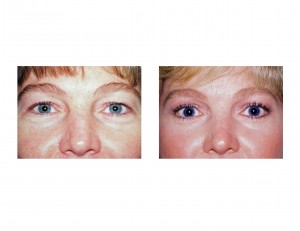Aging around the eye area is one of the first and often most significant signs of facial aging. The areas around the eye that change are the brow and both upper and lower eyelids. All the above sag due to not only loose skin but redundant (extra) skin as well. Most patients have a clear idea of these issues when it comes to the upper eyelid. They can clearly see skin hanging down onto their lashes and loss of the youthful supratarsal crease or fold that previously existed between the brows and the eyelashes.


There are several reasons for the almost always good scarring which occurs on the upper eyelid. First, the upper eyelid has the thinnest skin on the entire body. The thinner the skin (with less dermis), the less tissue there is to produce scarring. Scar formation comes from the skin’s dermis which is paper-thin. Quite frankly, the excellent eyelid scars we see is as much the result of its thin skin as it is surgical technique. Secondly, the scar line is sufficiently above the lashline of the upper eyelid that it is completely covered when one’s eyes are open. To find an upper eyelid scar, you would have to ask the patient to close their eyes and then look carefully up close. Lastly, most poor scarring comes from wounds that are closed under significant tension. As the eyelids spent a significant part of their time being open, the incision closure or scar line is not under much stretch or tension.
In my Indianapolis plastic surgery practice, I have observed that the upper blepharoplasty is a very effective and simple procedure to go through. Most patients report virtually no pain, no matter how it looks to the viewer. Scarring is a very rare issue with blepharoplasty or eyelid surgery.
Dr. Barry Eppley
Indianapolis , Indiana


